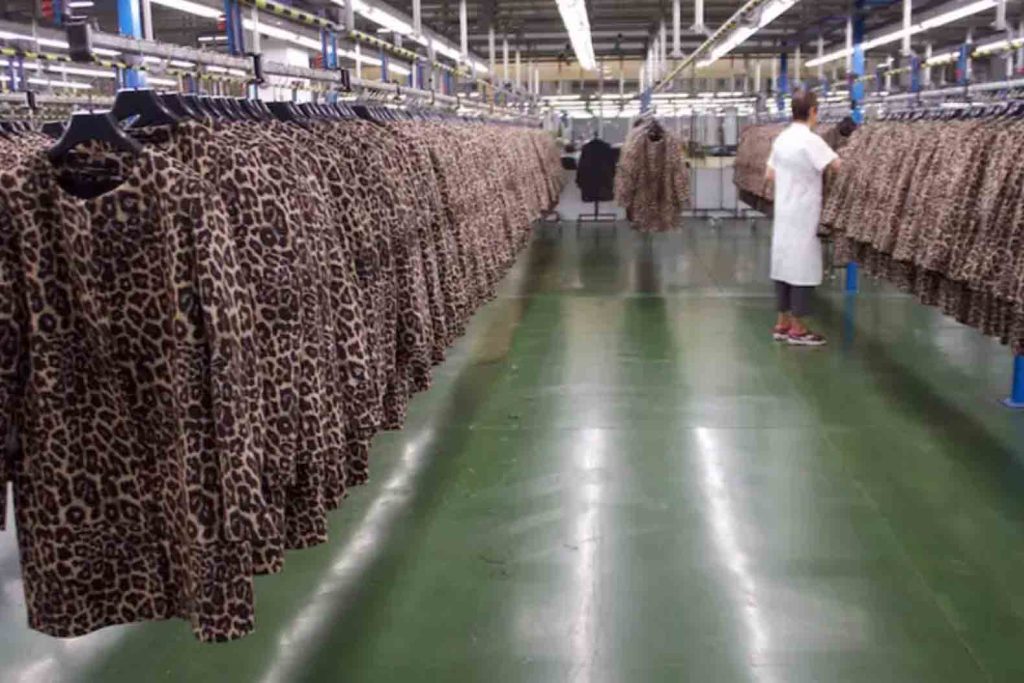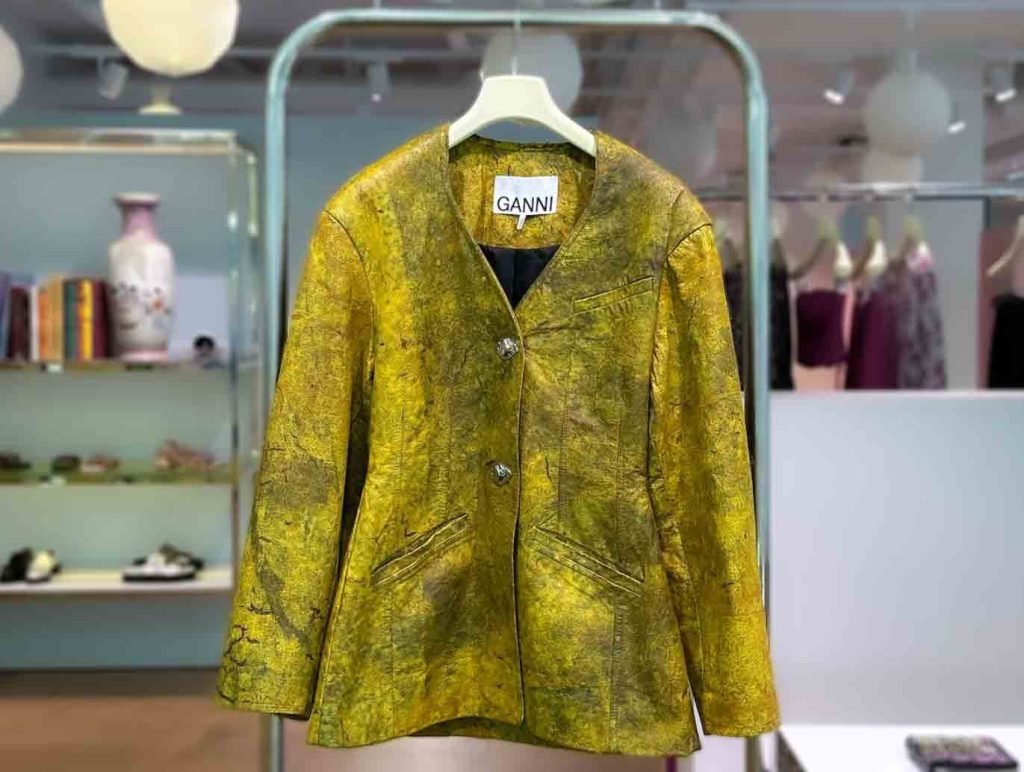In honor of Earth Day 2024, on April 22, we thought we might take a look at the rise of fast fashion and what we can do about it. As fashion students, designers, educators, retailers and as citizens of the world, we owe it to our planet!
The Rise of Fast Fashion

Neutral-colored clothing hangs on a store rack (Photo Credit: Pexels/Rachel Claire)
Did you know that over 100 billion new garments are manufactured globally each year?
Unsustainable practices, like overproduction and unethical manufacturing, have become commonplace in the world of fast fashion. Today, fast fashion is a prevalent part of our world, but it wasn’t always this way.
The good news is, it doesn’t have to stay this way, either. In this article, we’ll explore how fast fashion rose to prominence, the issues that came with it, and how we can make change to create a more sustainable future for fashion, where ethical and sustinable practices become the new norm.
The Origins and Expansion of Fast Fashion
Fast fashion companies prioritize rapid production methods to make inexpensive, low-quality clothing. They typically copy popular styles of other designers and make them at lower costs through mass production.
Before the Industrial Revolution, new clothing was mostly handmade by skilled workers, accessible primarily to the wealthy classes. With the rise of new technologies in the early 20th century, fashion production began to see big changes. Manufacturers found ways to lower costs through new machinery and outsourcing to low-paid workers.

Men pull racks of clothing through the Garment District, New York City, in 1955 (Photo credit: World Telegram & Sun photo by Al Ravenna)
In the mid-20th century, fashion companies shifted to global manufacturing, leveraging overseas production to pay workers lower wages. This sparked a new wave of clothing production, where clothes were made faster and at a lower cost.
By the 1990s, this trend was accelerating rapidly. One notable player is Spanish fashion brand Zara. Founder Amancio Ortega began his company by making lower-cost versions of already popular designer looks, which were created in small batches to get them into stores as fast as possible.

Rows of jackets hang in a Zara manufacturing facility (Photo credit: Business Insider/Mary Hanbury)
In 1989, shortly after Zara expanded to New York, the New York Times referred to the company as “fast fashion,” thereby naming the movement.
In the years that followed, fast fashion would come to drastically change the industry: the clothing itself, the societal view of clothing, as well as the impact on the planet as a whole.
Environmental Issues and Social Impacts of Fast Fashion
As clothing prices changed, so did societal attitudes. The view of clothing changed from something to be cared for to something to be disposed of.
This leads to increased consumption and higher waste, which is especially problematic given the high environmental toll that fast fashion practices take: an estimated 2-8% of annual global carbon emissions come from the fashion industry alone.
Fast fashion also prioritizes the use of cheaper fabrics. While both natural and synthetic fabrics can be used sustainably,fast fashion companies opt for cheap and low-quality options. This often means non-organic cotton, which is referred to as the world’s dirtiest crop due to the high amounts of pesticides used, or cheaply made synthetics like polyester, which rely on high amounts of virgin fossil fuels and cause microplastic pollution.
Fast fashion is also harmful to garment workers. It’s estimated that only 2% of fashion workers worldwide are paid a livable salary, and many work in unsafe or unhealthy environments.
Transitioning Towards a More Sustainable Future
Though the current state of fast fashion may seem grim, as awareness begins to grow around these issues, times begin to change.
Advocacy groups like Fashion Revolution and Good On You bring light to these issues and highlight brands that produce clothing more ethically.

Woman holds a bag made from Econyl, a recycled textile (Photo credit: econyl.com)
Innovative materials are having an impact as well. For example, Econyl and rPET (recycled polyester) are creating new fabrics from post-consumer waste, like recycled fish nets and water bottles.

Yellow jacket by Danish brand Ganni made in collaboration with Polybion from their bio-based textile, Celium. (Photo credit: Ganni/Polybion)
Sustainable alternatives to leather and pleather are also on the rise. One example is Polybion, which is growing a plant-based leather alternative from fermented fruit waste.
As consumers, there are steps we can take to avoid fast fashion as well. From learning how to identify ethical companies to supporting small-scale designers, even a small step is a step in the direction of a more sustainable and ethical fashion future.
So, tell us, how will you choose to embrace sustainable fashion?
-------------------------------------
By: Francesca Sterlacci
Title: HONORING EARTH DAY- The Rise of Fast Fashion: How Did We Get Here, and Where Do We Go?
Sourced From: www.universityoffashion.com/blog/honoring-earth-day-the-rise-of-fast-fashion-how-did-we-get-here-and-where-do-we-go/
Published Date: Sun, 21 Apr 2024 01:08:39 +0000
Read More
Did you miss our previous article...
https://edmmusic.news/fashion-clothing/riding-high-the-resurgence-of-cowboy-fashion
 FestivalsMusicNew ReleasesArtistsFashion & ClothingVideosPrivacy PolicyTerms And Conditions
FestivalsMusicNew ReleasesArtistsFashion & ClothingVideosPrivacy PolicyTerms And Conditions
